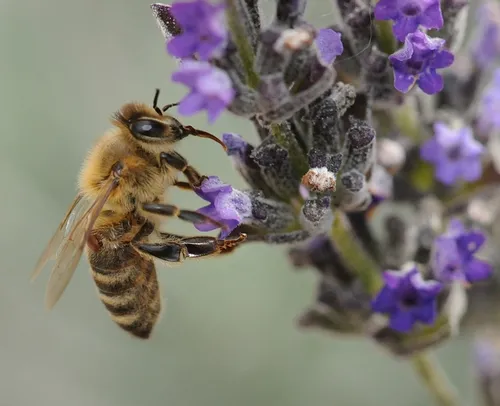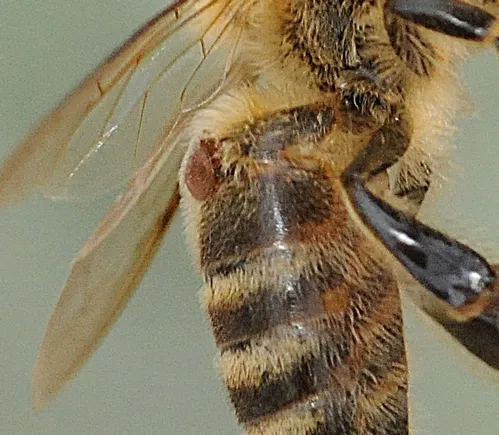What's wrong with this photo?
A honey bee is nectaring a lavender, right?
Right.
But if you look closely, you'll see a Varroa mite--a parasite--attached to her.
Varroa mites, considered the No. 1 pest in the honey bee industry, are linked to colony collapse disorder, a mysterious phenomenon characterized by adult bees abandoning the hive, leaving behind food stores and the brood.
Varroa mites are so common that it's rare to find a hive without them.
Female mites reproduce inside brood cells in the hive. Mites suck the bee blood or hemolymph; in doing so, they spread viruses, stunt the growth and cause deformities.
Within two years, they can destroy a colony.
Not a pleasant sight.



